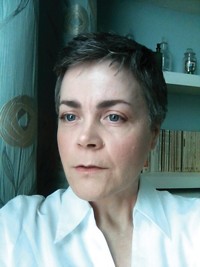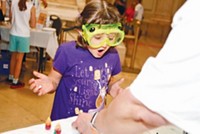Advertisement
Grab your lab coat. Let's get started
Welcome!
Welcome!
Create an account below to get 6 C&EN articles per month, receive newsletters and more - all free.
It seems this is your first time logging in online. Please enter the following information to continue.
As an ACS member you automatically get access to this site. All we need is few more details to create your reading experience.
Not you? Sign in with a different account.
Not you? Sign in with a different account.
ERROR 1
ERROR 1
ERROR 2
ERROR 2
ERROR 2
ERROR 2
ERROR 2
Password and Confirm password must match.
If you have an ACS member number, please enter it here so we can link this account to your membership. (optional)
ERROR 2
ACS values your privacy. By submitting your information, you are gaining access to C&EN and subscribing to our weekly newsletter. We use the information you provide to make your reading experience better, and we will never sell your data to third party members.
Careers
How A Stint In Nuclear Policy Is Making This Chemist A Better Mentor
Chemistry professor Christopher Cahill is taking a year off to focus on weapons of mass destruction at the State Department
by Jessica Morrison
December 7, 2015
| A version of this story appeared in
Volume 93, Issue 48

People don’t usually know what to say when they first hear that George Washington University chemistry professor Christopher L. Cahill is working in the State Department’s Office of Weapons of Mass Destruction Terrorism. Cahill, who’s on a policy fellowship from the American Institute of Physics, is serving a one-year term that began in August with the agency’s nuclear forensics team.
It does sound ominous, he admits. “But I think the first response that people have is that it sounds important and that I’m probably doing something to keep us safe, and those are both true.”
Cahill at a glance
◾ Age: 44
◾ What he thought he’d study: Music
Ph.D. alma mater: Stony Brook University, SUNY
◾ Current affiliation: George Washington University
◾ Research: Finding ways to better understand the nuclear fuel cycle through synthesis and characterization of hybrid f-element materials
◾ Three important papers by Cahill:
◾ K. E. Knope, H. Kimura, Y. Yasaka, M. Nakahara, M. B. Andrews, and C. L. Cahill. “Investigation of In Situ Oxalate Formation from 2,3-Pyrazinedicarboxylate under Hydrothermal Conditions Using Nuclear Magnetic Resonance Spectroscopy.” Inorganic Chemistry 2012, DOI: 10.1021/ic3000944
◾ C. L. Cahill, D. T. de Lill, and M. Frisch. “Homo- and Heterometallic Coordination Polymers from the f elements.” CrystEngComm 2007, DOI: 10.1039/B615696G
◾ D. T. de Lill, N. S. Gunning, and C. L. Cahill. “Toward Templated Metal-Organic Frameworks: Synthesis, Structures, Thermal Properties, and Luminescence of Three Novel Lanthanide-Adipate Frameworks.” Inorganic Chemistry 2005, DOI: 10.1021/ic048755k
Cahill says that he hopes his experience working in the government will make him a better mentor for students with diverse career interests.
Cahill recently sat down with C&EN to talk about how he became interested in science policy and why he chose to put his teaching and research career on hold to immerse himself in that world. The interview has been edited for length and clarity.
When did you first become interested in the intersection between science and policy?
I would say that the interest really crystallized about four years ago when I started lecturing in the Elliott School of International Affairs.
I would deliver some technical presentations for policy courses on a one-off basis, once or twice a semester, to help out my policy colleagues with a technical presentation on the nuclear fuel cycle or nuclear energy, and it became abundantly clear to me that in the nuclear arena, in particular, the policy is just as important as the technology.
The more I started hanging around with this crowd, the more I started to get interested in knowing about some of the other complex issues beyond the technical.
That led me to up my game. I worked with a couple of other colleagues to take it from a one-off lecture opportunity and really develop some serious lecture curricula aimed at nontechnical policy professionals.
My policy interests are sort of peaking at the moment, and that’s what has prompted this foray into the State Department. I have the technical side of things under control, but I needed the practical experience on policy, and frankly I needed the street cred of interacting with this community professionally in order to bring those experiences back to the classroom.
How has your affiliation with the Elliott School of International Affairs heightened your awareness of opportunities for scientists to get involved with policy?
Scientists tend to think that the only thing they can do is science. Being in the Elliott School, and being in Washington, D.C., I started to encounter scientists with some unique job descriptions, and so I started to keep my eyes open for these kinds of opportunities. I started becoming more aware, as a consequence of interacting with Elliott School people, of where you find scientists other than just the bench.
I also was a little bit primed for spotting opportunities because I wanted to be a better mentor.
The job market certainly has some challenges for scientists these days, especially in academia. Not everyone is going to get an academic position, and I wanted to be able to have informed advice and informed comments for my students.
The Elliott School came along at the right time. It was the perfect storm of me being ready for these conversations and the Elliott School providing a forum to begin exploring.
What do you hope to bring back to your research and teaching positions once you’ve finished your fellowship at the State Department?
I have a lot of comments on that, and some of them are a little amorphous because I’m still learning what a win is in the policy community. I’m learning a broader appreciation for what a work product is across disciplines, and I think that’s important especially if I want to be able to mentor people. Scientists know well what a deliverable is—you write a paper, and it gets published. That’s a win.
In policy, there are lots of different ways that you can deliver a product, and I’m learning what those are. I need to be able to say, “Strive for something other than another paper.”
What advice would you give to students or other career academics like yourself who are interested in learning more about policy but who don’t have the privilege of living in Washington, D.C.?
That’s a good question, and fortunately I think we’re in a time of some deep resources. Even if they’re not in Washington, D.C., I would encourage getting on the mailing lists of Washington, D.C.-based organizations, like think tanks and other nongovernmental organizations that can be a resource for the latest policy developments in the field. Sometimes you’ll get invited to a seminar, but you also could get briefings from events.
And fill your Twitter feed with employees from those places who are often live-posting from an event. I tend to not put as much value in the sound bite, but the fleeting and real-time bits from social media can lead you to more substantive dialogue and engagement remotely with an organization.
Any thoughts on how people can get involved at their universities?
There’s more at a university than I think your average scientist thinks. What you’ve got to do is just know where to look. With me, it was obvious with the Elliott School, but it wasn’t until I had an “in.” I had a colleague over there who dragged me to events and showed me who was who, and then I was on the mailing list. I think you have to break into that crowd at your university. Somewhere someone is doing something related to science policy.
And let’s broaden the definition of science policy—it could be environmental, health, or technology. When you scratch the surface a little bit, and you say, “Hey! Wait a minute, this has some real relevance,” when you find that resonance or something that piques your interest, I would encourage more interactions with those individuals to see where that leads you. Tap into their network a little bit.
The other thing that I’ve noticed is that an articulate scientist is welcome in the policy community. Offer to give a lecture in the political science department on some bit of science that is at the heart of their policy issues. Give a chalk talk to guide the policy folks through the science of what it is that they’re studying. That’s a good way to get a back-and-forth going, and that’s a good way to get welcomed in. If you wow ’em with a good 20-minute talk, they’re going to want you back, and you’ll be able to foster a good dialogue that way.
Is there anything else that you would like C&EN readers to know about your career path or the importance of scientists getting involved in policy?
I have a cautionary tale: It’s easy to be a dilettante, and it’s easy to be so interdisciplinary that you have no discipline. My advice to scientists is that you’ve got to be the scientist first.
You need scientific credentials and accomplishments and a reputation in order to be taken seriously in the policy community, and you really want that concrete accomplishment of having done something in science, whether that’s your master’s or your Ph.D. or something else. Rigorous science has to be first, and if you take a diversion too soon in your scientific career and find out you’re not crazy about policy, it’s going to be tough to get back. There is no substitute for scientific rigor. You’re more valuable to science and you’re more valuable to policy as a rigorous scientist first who then develops a policy cognizance.





Join the conversation
Contact the reporter
Submit a Letter to the Editor for publication
Engage with us on Twitter